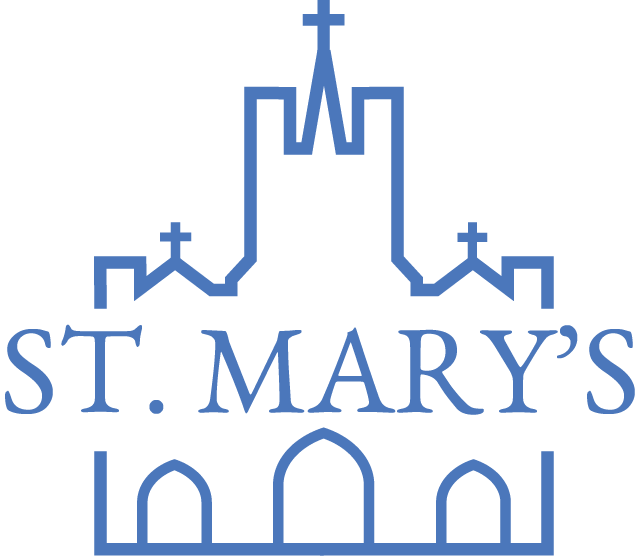25 Apr Second Sunday of Easter
April 23, 2017
Deacon Blaine Barclay
Divine Mercy Sunday is also Doubting Thomas Sunday. We live in a world of doubting Thomas’ who trust only their senses; think that Religion is only for the feeble minded who replace concrete experience with visionary illusions.
Seeing is not believing. Vision is not enough for Thomas, he seeks concreteness. Only touching the crucified wounds of the Risen Jesus will convince him that this is indeed his Resurrected Master; the same Jesus who just days ago hung up on the tree, nailed to the wood of the cross, his heart pierced for all of us, blood and water flowing, a river of mercy. Think for a moment, how significant it is that Jesus did not just assume human nature in the abstract, but a concrete, particular human nature with its deepest wounds, pierced heart, executed flesh. In Jesus, God has embraced the human condition right down to the bottom. This self emptying God meets Thomas in the upper room, invites him to put his hand in the wound in his side. He does not scold Thomas for his hunger for concreteness, for a love and mercy that he can touch and feel, not just with his hands, but with his heart; wounded flesh touching wounded flesh.
We can read this story and think only of the wounds of Christ. The ones that Thomas longs to touch, to dissipate his doubts. It is easy to miss the wounds of Thomas reaching out to be touched by the wounded flesh of the Risen Jesus. Jesus meets us just as concretely as he met the doubts of Thomas. He does not mind our woundedness, our scars, our need for Mercy. He meets us with his own wounds, open not only to our gaze, but to our human touch.
Here is the connection between Doubting Thomas and Divine Mercy. Wounded flesh touching wounded flesh. Mercy flowing from the wounds of Christ, wellspring of mercy, flowing like a river. Jesus appearing inside the locked doors of our hearts and fears, inviting us to touch his wounded flesh with the hands and fingers of our own weakness, with the frailty of our lack of trust, our incapacities, our disordered lives.
But how are we, how are the doubting Thomas’ of our day, to touch the wounds of Christ? We live in a world so full wounds, scarred hands, pierced hearts, executed corpses, discarded flesh; Syria, Iraq, Sudan. The hungry, the thirsty, the naked; and ‘those who have made shipwreck of their lives’. Let us not ask. ’’who is my neighbor?’’ The person in need is my neighbour. “Whatever you do to the least of my brothers and sisters you do to me.” What Jesus said to the disciples in the upper room he says to us now.’’ Peace be upon you’. By way of emphasis, he says it three times. ’’Shalom aleichem, peace be with you, as the Father has sent me, so I send you “.
As missionary disciples, we are sent out into the world, in the power of the Resurrection, with the message of Shalom, peace, wholeness, completeness. We are sent with the healing touch of the wounded Christ, and our own wounded humanity. As Peters first letter tells us today; ’’By his great mercy he has given us a new birth into a living hope through the Resurrection of Jesus from the dead’’. This message of Shalom, Peace be upon you, is animated by joy. Peter tells us, ’’You believe in him and rejoice with an indescribable and glorious joy’’. But how is the boldness of this proclamation, this indescribable joy, to be sustained over the long haul? Our first reading from the Book of Acts gives us the road map for our journey, a cartography of the life of discipleship. Of the Early Church it says; ’’They devoted themselves to the Apostles teaching and fellowship, to the breaking of bread and the prayers’’. These are referred to as the Four Pillars of our faith. We build our lives around them to this day. The Catechism of the Catholic Church is organized around these Four Pillars. Catholics are called to be devoted ‘to the Apostles teaching’ as found in scripture and tradition, summarized in the Creeds. To sustain an apostolic lifestyle, we need to cultivate good moral lives and build bridges of solidarity and friendship with one another, especially the weak and wounded. This is the pillar of ‘fellowship’. The ‘breaking of bread’ is of course the Eucharist and the other sacraments that flow from it, but it also points to the need to eat together, as families do, and to share our bread with the hungry poor. ’The prayers’, refers to praying the Psalms, what today we call the Liturgy of the Hours, a prayer form we are all invited to enter into; but also other forms and disciplines of cultivating prayer and spirituality. Sustained by this our common life, built up by the various practices associated with these Four Pillars we are sent out into our wounded world as emissaries of the Divine Mercy, missionaries of the tenderness of God.

